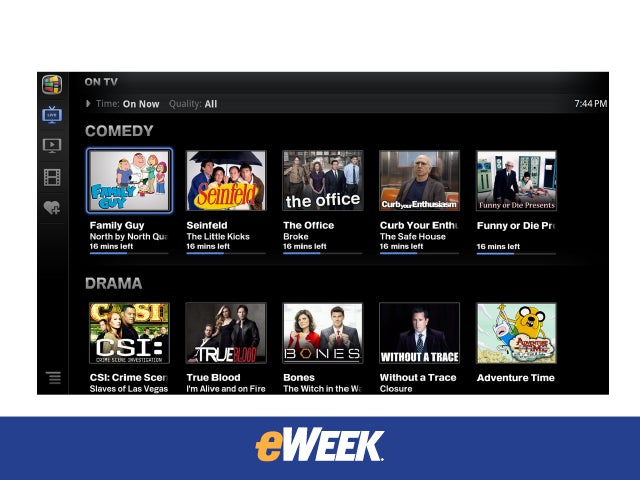eWEEK content and product recommendations are editorially independent. We may make money when you click on links to our partners. Learn More.
1Home Entertainment
In May, Google unveiled Android@Home, an experimental play to build and test Web-enabled devices powered by the Android OS. Google software engineer Joe Britt showed off a stereo system that lets users zip a CD’s content to the cloud and stream it wirelessly throughout a house. Last week, it came to light that Google had built more than 250 of these systems and is having its employees test the systems around the United States. Of course, these devices will feature the Google Music cloud and storage locker.
2Labs, Labs, Labs
On Feb. 13, the San Jose Mercury News unearthed documents Google filed concerning its Mountain View, Calif., headquarters. The papers detail a Google Experience Center. This 120,000-square-foot center will serve as private museum for Google’s most important clients. Clearly, Google wants to test solutions and bounce them off others. More interesting, however, is that Google is also modifying a lab for a “Project X,” which appears to involve precision optical technology. Google co-founder Sergey Brin, who discussed how he is running the X Labs at the Web 2.0 Summit in October, has said he and his team are testing things that are “farther afield” than Google’s daily search grind. Why is this interesting? Apple has several top-secret labs where it builds and tests new gadgets and software. Again, it seems Google is picking the Apple pattern.
3IP Video?
Google has filed some interesting patent applications, including this one Ars Technica detected for a fixed satellite, receive-only earth station in Iowa. Google will build multiple earth stations “to provide analog and digital audio, data and video services.”
4Google TV
5Hello Moto
Google is on the verge of acquiring Motorola Mobility, which in addition to making Android handsets and tablets, builds and sells set-top boxes. Google would then own not only the software in Google TV appliances, but also the central set-top boxes that serve IPTV, such as AT&T’s U-Verse and Verizon FiOS. This means more hardware notches on Google’s belt.
6Tying It Together
Imagine the following scenario. Google TV might have seemed like a one-off program to make more money from YouTube advertising two years ago when it was introduced, but it’s clear the company’s ambitions are greater than that. If Google can power televisions and other home entertainment devices, it can move on to appliances. These devices will eventually be powered by Google Fiber, providing fiber-to-the-home at 1GB per second data speeds that are currently unheard of for most homes. Then, imagine the video streaming transfers associated with this.
7Smart Remote Access
What’s even more compelling is that Google will enable its Android software on smartphones to remotely control Google TV and, presumably, the home entertainment system. Google Executive Chairman Eric Schmidt alluded to as much at the 2012 Consumer Electronics Show, noting that users could sync their smartphones with Google TV to trigger programming when they enter their homes.
8Tablets, Too
What’s compelling about Android tablets is that you can use them as remote controls for not only the television, but also for the streaming music system and any other Android@Home-enabled devices. Think you forgot to shut off the lights in the cellar, or left the oven on and you’re 20 miles away at your office? Turn on your Android tablet and shut them off.
9Problems
10Motorola Okay
And Google has to somehow work with Motorola without ticking off its other Android partners. Or maybe it doesn’t care? We’ll see.









